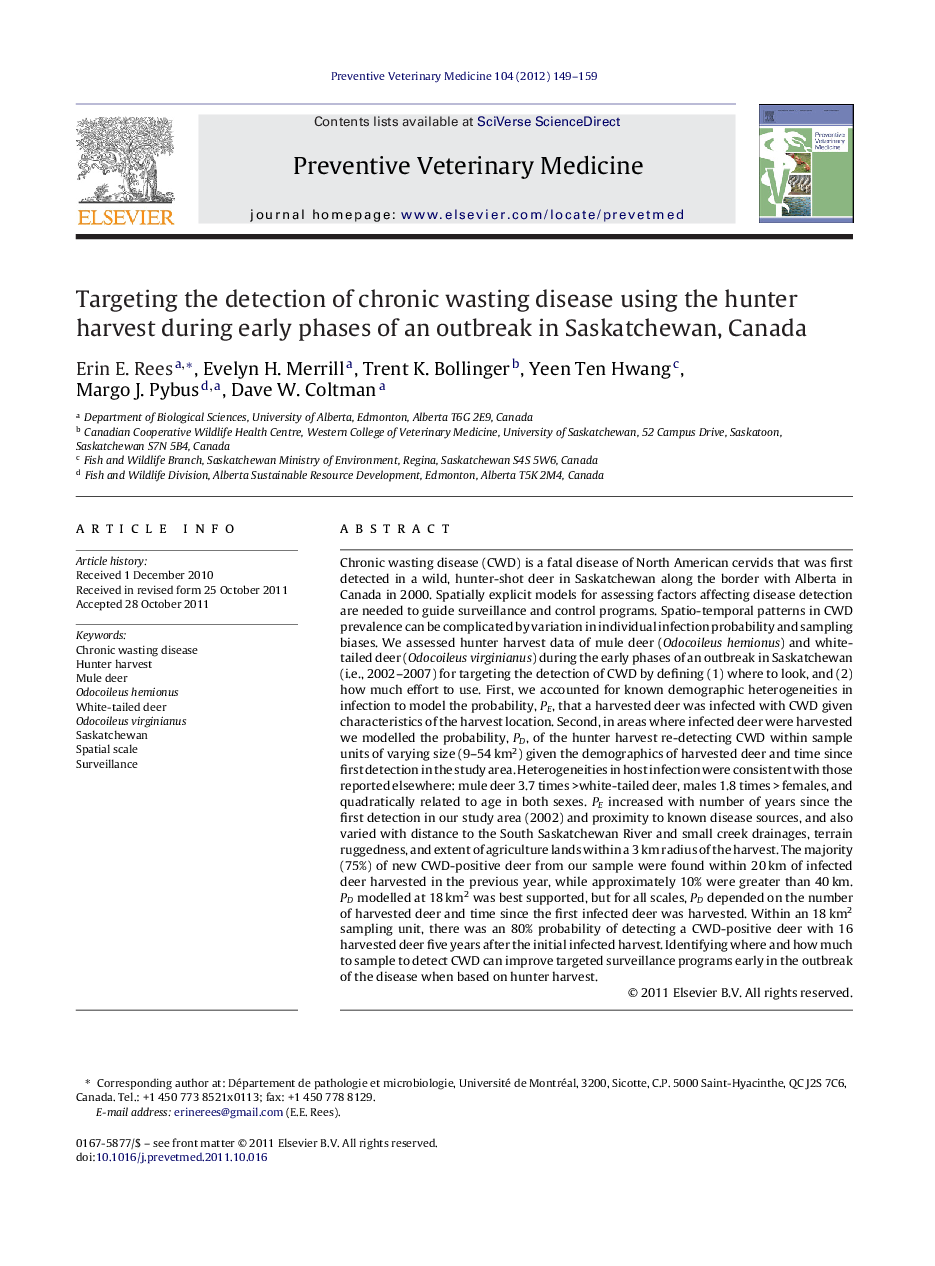| کد مقاله | کد نشریه | سال انتشار | مقاله انگلیسی | نسخه تمام متن |
|---|---|---|---|---|
| 2452711 | 1554191 | 2012 | 11 صفحه PDF | دانلود رایگان |

Chronic wasting disease (CWD) is a fatal disease of North American cervids that was first detected in a wild, hunter-shot deer in Saskatchewan along the border with Alberta in Canada in 2000. Spatially explicit models for assessing factors affecting disease detection are needed to guide surveillance and control programs. Spatio-temporal patterns in CWD prevalence can be complicated by variation in individual infection probability and sampling biases. We assessed hunter harvest data of mule deer (Odocoileus hemionus) and white-tailed deer (Odocoileus virginianus) during the early phases of an outbreak in Saskatchewan (i.e., 2002–2007) for targeting the detection of CWD by defining (1) where to look, and (2) how much effort to use. First, we accounted for known demographic heterogeneities in infection to model the probability, PE, that a harvested deer was infected with CWD given characteristics of the harvest location. Second, in areas where infected deer were harvested we modelled the probability, PD, of the hunter harvest re-detecting CWD within sample units of varying size (9–54 km2) given the demographics of harvested deer and time since first detection in the study area. Heterogeneities in host infection were consistent with those reported elsewhere: mule deer 3.7 times >white-tailed deer, males 1.8 times > females, and quadratically related to age in both sexes. PE increased with number of years since the first detection in our study area (2002) and proximity to known disease sources, and also varied with distance to the South Saskatchewan River and small creek drainages, terrain ruggedness, and extent of agriculture lands within a 3 km radius of the harvest. The majority (75%) of new CWD-positive deer from our sample were found within 20 km of infected deer harvested in the previous year, while approximately 10% were greater than 40 km. PD modelled at 18 km2 was best supported, but for all scales, PD depended on the number of harvested deer and time since the first infected deer was harvested. Within an 18 km2 sampling unit, there was an 80% probability of detecting a CWD-positive deer with 16 harvested deer five years after the initial infected harvest. Identifying where and how much to sample to detect CWD can improve targeted surveillance programs early in the outbreak of the disease when based on hunter harvest.
Journal: Preventive Veterinary Medicine - Volume 104, Issues 1–2, 1 April 2012, Pages 149–159